The site is huge, with around a hundred well-preserved tombs. Most visitors come by 4x4 if they want to see tombs off the beaten track, or by bus for the must-see sites. If you set off from Medina, the road is long: 400 kilometres through the desert. If you leave from Al Ula, you will be around thirty kilometres from the tombs, or even twenty-five depending on the location of your hotel.
The Seven Wonders of the World disappeared in ancient times, and seven replacements were found. But that was without counting the ancient Nabataean city of Mada'in Saleh (Madahine-Saleh), also known as Hégra, the country's most impressive and fascinating archaeological site. This sometimes buried city has its place among these marvels, which also include Petra, the other great Nabataean necropolis, with which it has historical links.
Because of its importance, UNESCO has included it on its list of World Heritage Sites, under the name of Al-Hijr archaeological site.
To give you an idea of its location, it is in the east of the country, in the desert, around 200 kilometres from the Red Sea, as the crow flies, in the Al-Ula valley. It consists mainly of several monuments, each quite a distance apart, which you won't be able to cover on foot: Al Diwan, to the north, and to the south, Hegra, which is relatively central to the whole. Further south are the tombs of Al Sanea and Lihyan (Qasr al Farid), and the 18 tombs of Jabal Al Ahmar. To the west of Al Diwan, the mud houses of AlManabhh.
As we shall see, the Al-Ula oasis alone has a lot to offer.

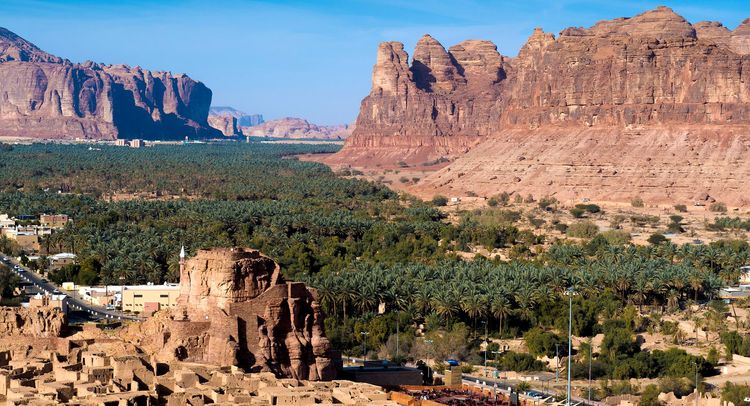
Al-Ula is an oasis wedged between two rocky outcrops.
- © MHD PHOTOGRAPHY CO / ShutterstockUsing Al-Ula as a base camp
At Al-Ula, which has its own international airport, you will have a choice of accommodation, including luxury hotels. Some hotels rent bicycles, but don't venture into the desert on two wheels. The sun is blazing. An air-conditioned 4x4 is the only option (or a bus for group tours). Reserve the bikes for a ride through the oasis.
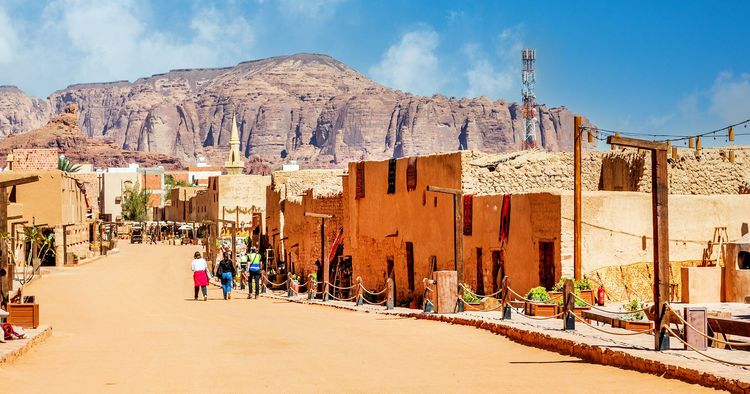
Al-Ula is a typical Arabian desert town, but with a thousand years of history that makes it unique.
- © Vadim_N / ShutterstockBefore setting off for Madahine-Saleh, get acclimatised by taking a stroll around the town of Al-Ula or head for the oasis. You can also visit the site of Dadan, which will give you a foretaste of your future discovery of the tombs (although they are not from the same period of history).
To find out more about Al-Ula, we recommend this article, which will tell you more about this essential stage in any expedition to Mada'In-Saleh (Hegra).
When you're ready to set off, bring plenty of water and have a snack prepared for you at your hotel. Of course, we recommend an organised expedition, with a guide.
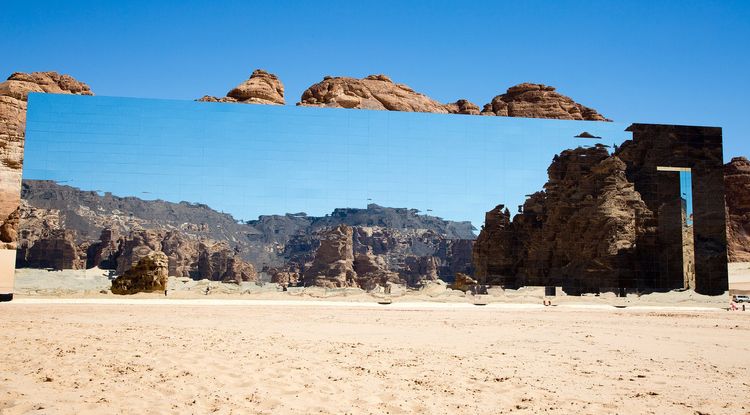
A veritable mirage in the desert, the mirrored façade of the Maraya concert hall.
- © CJimenez / ShutterstockDirection Mada'In-Saleh (Hégra)
Let's take a leap back in time and look at the site of Mada'in Saleh, built by the Nabataeans, just like the majestic Petra in present-day Jordan. We are a few hundred years before our era, when the Dadanite (Lihyanite) kingdom is in decline. If you have been to Dadan, which we recommend, you will note the similarity between the Dadanite and Nabataean necropolises, whose tombs are also carved into the sandstone cliffs, following large rectangular openings that cut into the rocks: the burial chambers.
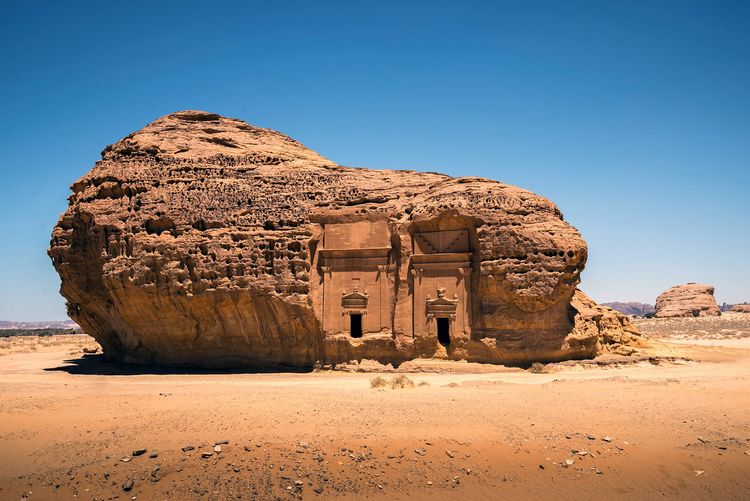
Getting there
To get to the site, if you want a degree of independence, you will need a guide who is authorised to enter. From then on, you can get there in a private vehicle - ideally a 4x4 - with a driver and a guide accredited by the authorities. Otherwise, it's a group visit by bus. And that takes longer, not to mention the time constraints.
Jabal AlAhmar
Jabal AlAhmar has 18 tombs, some of which have recently been cleared. This particularly well-preserved site is a UNESCO World Heritage Site.
Jabal AlBanat
Jabal AlBanat is an imposing rock with 29 tombs. Allow plenty of time for a tour.
Practical information
✈️ How do I get to Al-Ula (and then on to Mada'In Saleh)?
Al-Ula has its own international airport.
🌞 The weather
If you love the desert, you already know that it can be very hot. Don't neglect this aspect of your trip. Find out about temperatures and sandstorms. Also, always be able to hydrate yourself properly.
🚙 Go to the archaeological site of Mada'In Saleh (Hegra)
If you want to discover Hegra by 4x4, you have the option of booking an air-conditioned Land Rover by following this link
💰 Prices
From 700 SAR / person, i.e. 175,00 €.
⏳ Duration
2 hours
🚙 Visit the archaeological site of Hegra / Mada'In Saleh
To book a half-day trip to Hegra (Mada'In Saleh), it's here.
💰 Prices
From 95 SAR / person, or 23.63 €.
🚙 Getting to Dadan by 4x4
You can get a taxi there, and your hotel will make it easy to call one from their reception. For optimum comfort, you can also use a 4x4 with driver, which you'll book here.
For both options, don't forget the tip.
🍴 Where to eat?
We recommend eating at your hotel or any other establishment with a restaurant.
A few words about the Nabataeans
There is evidence that they existed at least 1000 BC and up until the 6th century AD. The Nabataeans were a nomadic people from northern Arabia who traded incense and spices between present-day Yemen and the Mediterranean. Petra, in present-day Jordan, was their capital. They were strongly influenced by the Arameans.
At Madahine-Saleh, their tombs are dug in the same way as those of the Dadanites, whose influence we can assume. Here, the tombs excavated between the 1st century BC and the 1st century AD are better preserved than those on the Petra site. The exterior ornamentation carved into the stone is remarkably modern.
Jabal Ithlib, the Siq and Al Diwan, the Council Chamber
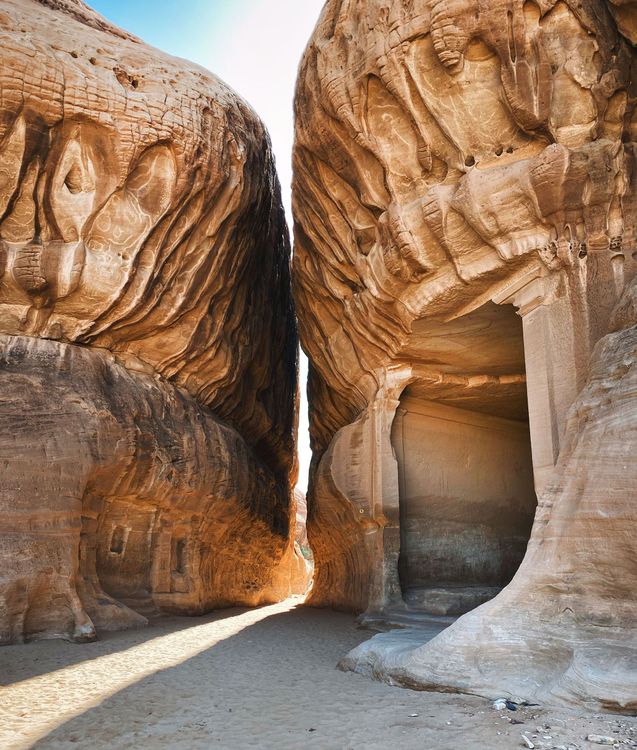
Le Siq et la salle d'Al Diwan (à dr.)
- © Salwa Hussein / ShutterstockIn the Arab countries of the Middle East, the Siq is the space left vacant by two rock walls spaced far enough apart to allow people to pass between them. The most famous is the one at Petra, filmed by Spielberg in "Indiana Jones & the Last Crusade", from which his character escapes on horseback at the end of the film.
At the entrance to Mada'in Saleh is Al Diwan.
This entire area was dedicated to the god Dusares (Dushara), the supreme deity of the Nabataean pantheon.
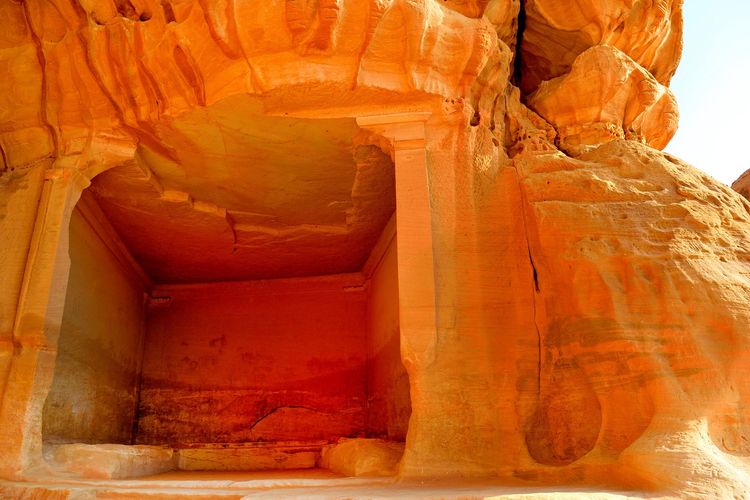
Al Diwan est la salle de réunion du site.
- © aliirsha / ShutterstockThis cube-shaped concavity in the rock served as a council chamber for the Nabataeans. It is assumed that it was still in use long after the Nabataeans had disappeared.
Elephant Rock or Jabal-Al'fil
It is a monumental rock that rises out of the ground and, from a distance, looks like an elephant, or rather a mammoth, with its trunk touching the ground.
There are cafés around this rock. From four o'clock in the afternoon, you can relax, sip an espresso or have a refreshing drink.
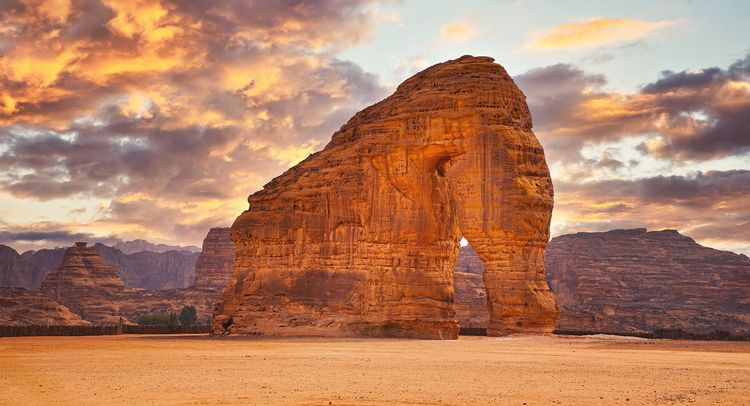
Elephant Rock is more like a woolly mammoth.
- © Lubo Ivanko / ShutterstockThe Qasr Farid
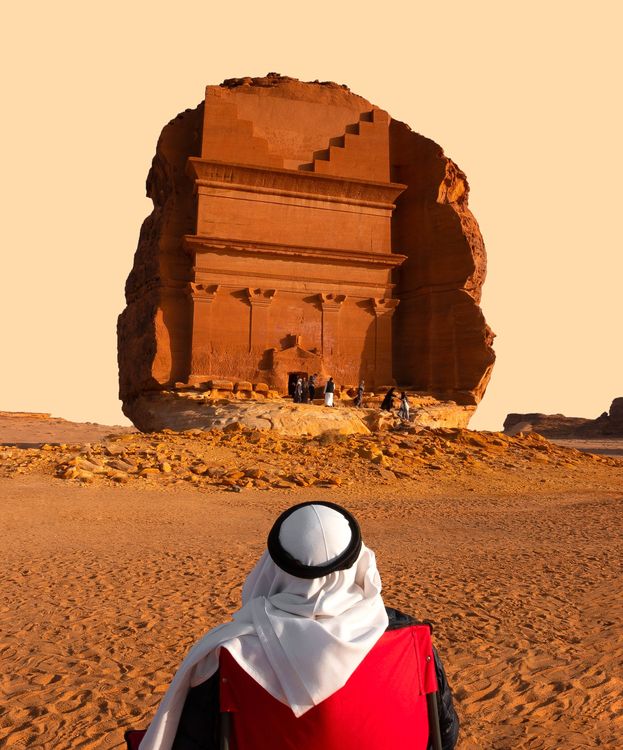
The imposing rock of Qasr Farid and the tomb carved into it, the Tomb of Lihyan, son of Kuza.
- © alrshodi / ShutterstockThis tomb is the most imposing on the site, due to the size of the monumental rock in which it is carved: 16 metres high. The tomb itself is an unfinished room measuring around 4 by 4 metres. Unfortunately, this tomb can no longer be visited. It is under constant police surveillance.
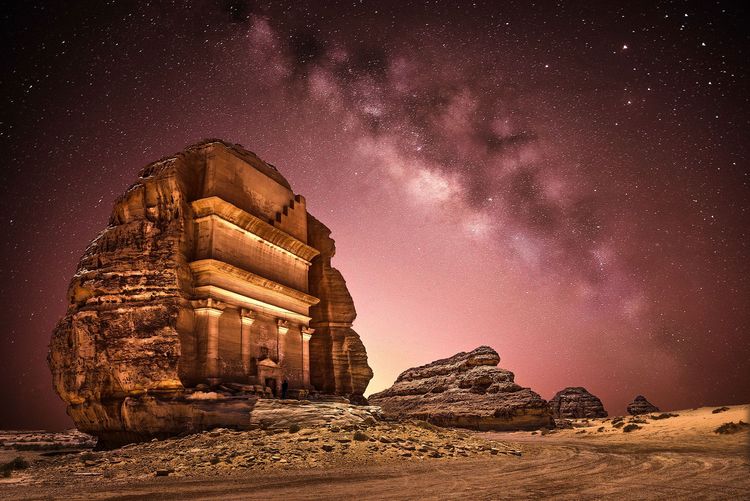
Le Qasr Farid et la Voie Lactée
- © Osama Ahmed Mansour / Shutterstock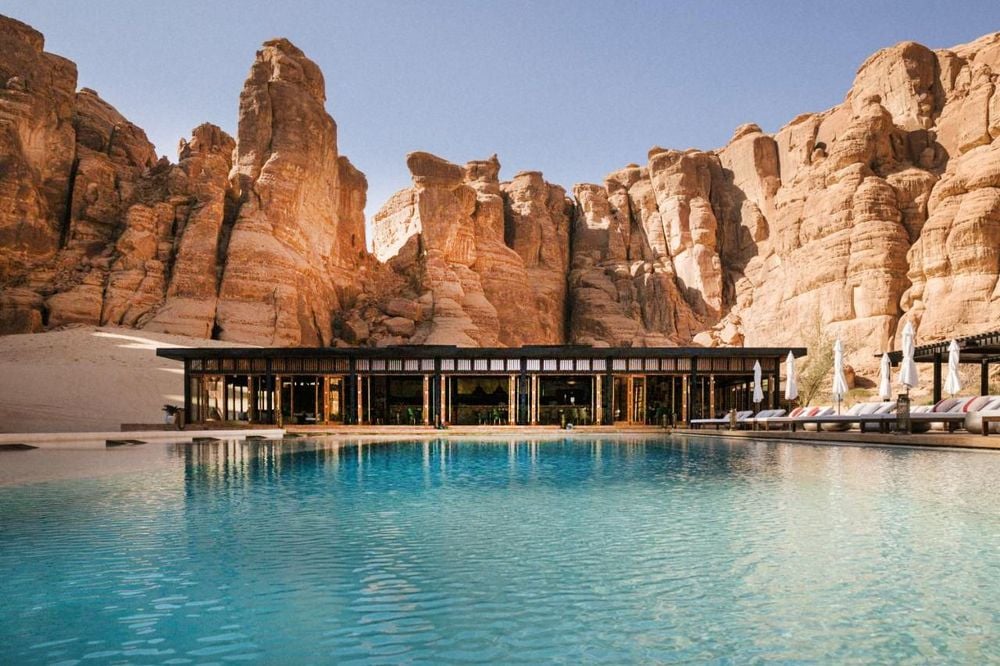 Saudi Arabia
Saudi Arabia






